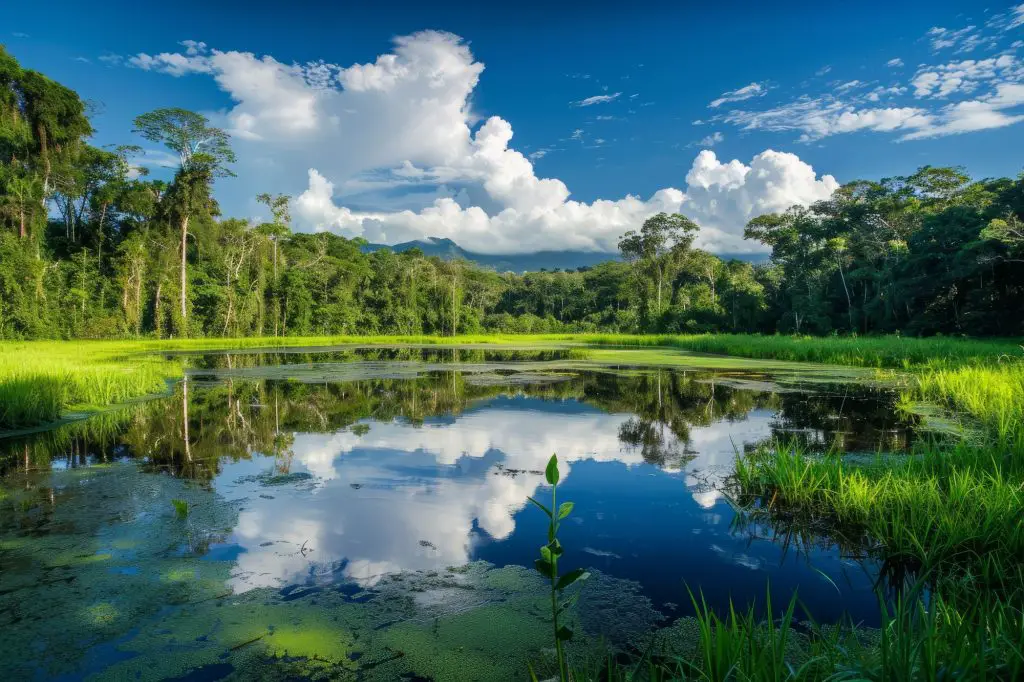Inland fishing zones, such as the renowned Indian River Lagoon, offer a unique blend of biodiversity and recreational opportunities, fostering a symbiotic relationship between preservation efforts and human activities. These areas are critical habitats for many species and serve as a vital component of local ecosystems. Balancing the dual objectives of preserving these natural treasures and providing avenues for human recreation requires thoughtful management and sustainable practices.
The Indian River Lagoon, stretching along the Florida coast, exemplifies this delicate balance. Home to more than 4,300 species of plants and animals, this spot is one of the most biodiverse estuaries in North America. This biodiversity includes a vast array of Indian River Lagoon animals, such as manatees, dolphins, sea turtles, and countless species of fish and birds, many of which are endemic to the region. The lagoon’s health is crucial not only for the survival of these species but also for maintaining the economic vitality it provides through recreational fishing, boating, and tourism.
Continue reading to learn more about keeping the balance between preservation and recreation in inland fishing zones.
Understanding inland fishing zones
Inland fishing zones refer to areas within a country’s land boundaries designated for fishing activities in freshwater bodies, such as lakes, rivers, streams, ponds, and reservoirs. Unlike coastal or marine fishing zones in oceanic or sea environments, inland fishing zones are characterized by their freshwater ecosystems. These areas are critical for biodiversity, supporting various aquatic and semi-aquatic species, including multiple types of fish, amphibians, reptiles, and plant life.
Inland fishing is a significant activity for both recreational and subsistence purposes. Recreational fishing in these zones is a popular pastime, allowing anglers to engage with nature and pursue a variety of freshwater game and non-game fish species. On the other hand, subsistence and commercial fishing in inland waters provide essential nutritional and economic benefits to many communities, especially in rural areas.
Managing inland fishing zones is crucial to ensure the sustainability of fish populations and aquatic habitats. Overfishing, habitat destruction, pollution, and the introduction of invasive species are challenges these areas face. Consequently, conservation practices, regulatory measures, and sustainable fishing practices are implemented to preserve the ecological balance and ensure the continued availability of these freshwater resources for future generations.

Preserving the ecosystem in inland fishing zones
Preservation efforts in the Indian River Lagoon and similar inland fishing zones focus on combating pollution, restoring natural habitats, and implementing regulations that limit human impact. Strategies such as establishing marine protected areas, stringent water quality standards, and habitat restoration projects aim to mitigate the effects of human activity and climate change. These initiatives are critical in safeguarding the lagoon’s ecological balance and ensuring the survival of its diverse inhabitants.
If you’re a fishing enthusiast or a nature-lover who enjoys visiting these zones for leisure, do you know that you can contribute to their preservation? Here’s how:
Practice catch and release
Anglers can help maintain fish populations by practicing catch and release, especially with species under threat or subject to strict conservation measures. Using barbless hooks, handling fish with wet hands, and quickly returning them to the water can minimize stress and injury to the fish.
Follow fishing regulations
Adhering to local fishing regulations, such as size limits, season restrictions, and bag limits, is crucial for protecting fish populations. These regulations are often based on scientific research to ensure sustainable fishing practices.
Participate in habitat restoration projects
Joining habitat restoration efforts, such as river cleanups, wetland restoration, and replanting native vegetation along shorelines, can significantly improve the health of inland fishing zones. These activities help to restore natural habitats and enhance the quality of water.
Reduce pollution
Individuals can contribute to the preservation of aquatic ecosystems by minimizing pollution. This includes properly disposing of trash, avoiding the use of harmful chemicals near water bodies, and participating in local efforts to clean up rivers, lakes, and streams.
Support sustainable practices
Supporting businesses and products that adhere to sustainable practices can also contribute to preserving inland fishing zones. This includes purchasing sustainably sourced fish and fishing gear and supporting eco-friendly tourism.
You can also educate others about freshwater ecosystems’ importance and challenges. Educating friends, family, and community members about responsible fishing practices and conservation’s importance can inspire others to act.
Keeping the balance in inland fishing zones through recreation
Recreation brings economic benefits and fosters a deeper appreciation for these natural resources among the public. Fishing is a popular activity that supports local economies and encourages environmental stewardship. However, to ensure that recreational practices uphold conservation goals, promoting responsible fishing techniques, enforcing catch limits, and educating the public about the importance of preserving natural habitats is essential.
The challenge lies in maintaining a balance that allows for both the preservation of ecological integrity and the enjoyment of these natural resources. This balance is achieved through the collaborative efforts of government agencies, non-profit organizations, researchers, and the community. Stakeholders can develop and implement management strategies that protect inland fishing zones while accommodating sustainable recreational activities by working together.
Conclusion
The preservation and recreation balance in inland fishing zones like the Indian River Lagoon is pivotal for the sustainability of these ecosystems. Through concerted efforts in conservation, responsible recreation, and education, it is possible to protect these invaluable resources for future generations. We can ensure the continued health and vitality of inland fishing zones and their unique inhabitants by fostering an environment where preservation and recreation coexist harmoniously.

